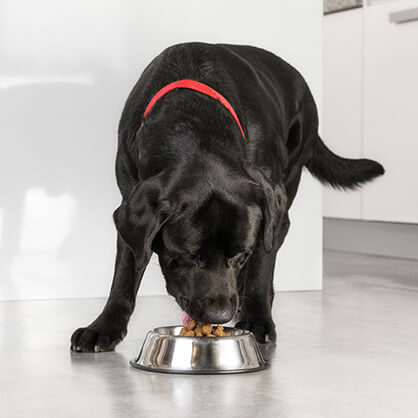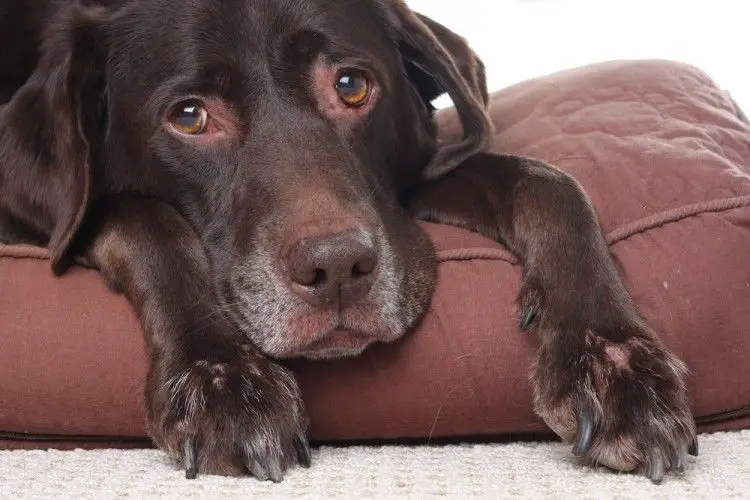Common Signs of Arthritis in Dogs. Did you know that joint pain or arthralgia is a very common problem in pets of any age? Did you know that in many cases it can go unnoticed, both for us and for its owners? What can we do to detect and alleviate it?
What Causes Arthritis in Dogs?
The causes of joint pain are multiple and require a specific treatment in each case, although there is a common therapeutic approach in all of them. It must be taken into account that one or more joints may be affected, which has a very obvious influence on the symptoms. It is also important to be very clear that joint disease is not exclusive to elderly animals; in fact, it is very frequently diagnosed in puppies and young adults. The most common causes of joint disease that cause pain are:
- Trauma or dislocation.
- Dysplasias (hip, elbow and shoulder)
- Osteoarthritis or osteoarthrosis, usually secondary to: dysplasias, trauma, stress or strain, obesity and advanced age.
- Arthritis or autoimmune polyarthritis.
- Septic arthritis.
Osteoarthrosis may be the cause, but it is also the consequence of joint disease.
How do we Arthritis in Dogs?
When talking about joint pain, the first thing we have to bear in mind is that animals and humans do not show the same behavior when faced with pain. In our case, when faced with any symptom of pain, our reaction is to share it, express it and, often, even amplify it.
In short, we communicate to our environment that we suffer from a certain pain. In the case of our pets, the response to pain is completely different, since they usually hide it. This is due to their survival instinct, sometimes much more decisive for them than their social behavior.
In order to survive, most animals hide the signs of pain or illness, and in the case of companion animals the same thing happens, since many behaviors are instinctive in origin. This is why for many owners, and even many veterinarians and assistants, the signs of joint pain can go completely unnoticed.
There is a tendency to think that as the animal walks, eats and plays it is fine, but we do not realize that on many occasions it does all this hiding or cushioning signs of pain. We interpret signs as important as the decrease in activity, as a sign of maturity or simply laziness. The most important clinical sign of chronic pain in an animal is attitude change.
Therefore, since our patients do not clearly report the presence of pain, and since these symptoms go easily unnoticed by their owners, we have a responsibility in our veterinary centers to be vigilant and detect signs and patterns of pain, including pain. Joint pain.
More frequent signs of Arthritis in Dogs
- Decreased activity: It is the most important sign of joint pain. In the case of puppies, it is common for the owner to report that his puppy is very lazy, calm and not very playful. In the case of adults, it is usually attributed to the fact that the animal is more mature or is aging. In cats it is very common to observe how they stop jumping on their favorite furniture or become much clumsier.
- Loss of interest in socializing, they spend a lot of time lying down.
- Loss of appetite
- Lack of hygiene: very common in cats, they stop grooming and relieve themselves outside the box.
- Panting: Many dogs with joint pain pant during the walk. The owner blames it on getting tired, but in many cases the cause is not fatigue but pain.
- Excessive salivation
- Changes in gait: especially in cases of bilateral or generalized osteoarthritis, it is common to observe how the patient walks differently. A dog with hip dysplasia, for example, and consequently with joint pain, walks with short steps, trying not to put all the weight on only one of the hind legs for a long time. Walk as if the ground is hot and with your head slightly lower than normal, to tilt your weight forward. In the case of puppies with hip dysplasia, they tend to run like a rabbit, that is, running in leaps and supporting themselves on their two hind legs at the same time, for the same reason, to avoid putting too much pressure on a single leg or joint.
- Lameness: Lameness is a claudication to joint pain. When the animal limps due to a chronic injury, it is because it is no longer able to compensate or hide the pain. In these cases, if there is a chronic injury, it is important to assess the other extremities, since if we detect osteoarthrosis, more joints are often affected.
We must banish the concept that if my animal does not limp, it does not have joint pain. Do not assume that an animal is fine because it has not stopped eating, it happily welcomes its owners when they come home and constantly wags its tail. It is very important that we pass this information on to the owners. The signs of chronic joint pain are much more subtle and it is our job to spot them and show owners how to do it.
SYMPTOMS OF ARTHROSIS IN OLD DOGS
The most common symptoms of osteoarthritis in dogs are lethargy, lameness, numbness of the joints, reluctance to move, signs of pain when touched, signs of aggression when trying to feel very painful areas, and even panting or barking without apparent cause. That is, osteoarthritis causes symptoms of the structures it affects, the bones and joints, but also changes in the behavior of the animal.
You should start to suspect that your dog has osteoarthritis if the answer is yes when you ask yourself one or more of the following questions:
- Is your dog limping?
- Don’t you exercise as much as you used to?
- Do you spend more time lying down than before?
- Do you find it difficult to get up when you are lying down?
- Do you have difficulty climbing stairs or accessing the car?
- Have you lost your appetite?
- Does it prevent you from touching it?
- Have you had an unexpected change in behavior?
If you have answered yes to any of the previous questions, you should take your dog to the vet for an evaluation. He will ask you questions about their habits, carefully and orderly palpate all their joints, and, if deemed necessary, take X-rays to check if the bones have undergone the characteristic changes of osteoarthritis.

SOLUTIONS AND PREVENTIONS IN ARTHROSIS IN OLDER DOGS
Treatment aims to reduce inflammation and pain, slow the progression of the disease and promote the recovery of joint mobility. Medications (analgesics and anti-inflammatories) are used for this, and a series of active exercises are recommended, such as quiet walks or swimming on the beach, as well as passive exercises through physiotherapy.
The bones and joints, in addition to the movement of the dog, support the weight of its body. If the weight is excessive, its wear and tear is accelerated and the possibility of suffering from osteoarthritis increases. Controlling your dog’s weight is essential in these cases. If he is overweight or obese , you should submit him to a dietary treatment to slow the progression of the disease. A high percentage of dogs, suffering from osteoarthritis and being overweight at the same time, stop having a limp with a simple weight loss program to achieve an ideal body condition.
Therefore, it is very likely that, in addition to medications and exercises, the veterinarian will recommend the intake of a therapeutic diet or diet to help you control their weight.In addition, there are therapeutic diets that incorporate functional ingredients that help to slow down wear. of the joints, as well as natural antioxidants that help reduce inflammation in your joints.
As in many other chronic diseases, the ideal is to prevent. There may be a family or genetic basis in the appearance of osteoarthritis. If your dog is predisposed to suffer from it, it is not convenient to favor attitudes or situations that increase the probability of suffering it. The most recommended measures for the prevention of arthritis in old dogs:
- Avoid being overweight or obese. This aspect is especially important during their growth, and when entering the adult-elderly vital phase.
- Eliminate overly strenuous exercise in the growth phases, when the joint tissues are still tender and more susceptible to damage than in mature dogs.
- Make him exercise regularly, avoiding excessive intensity if he is not previously trained.

